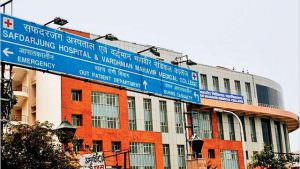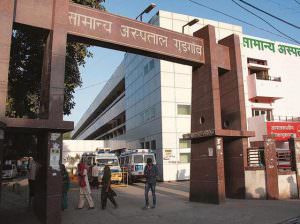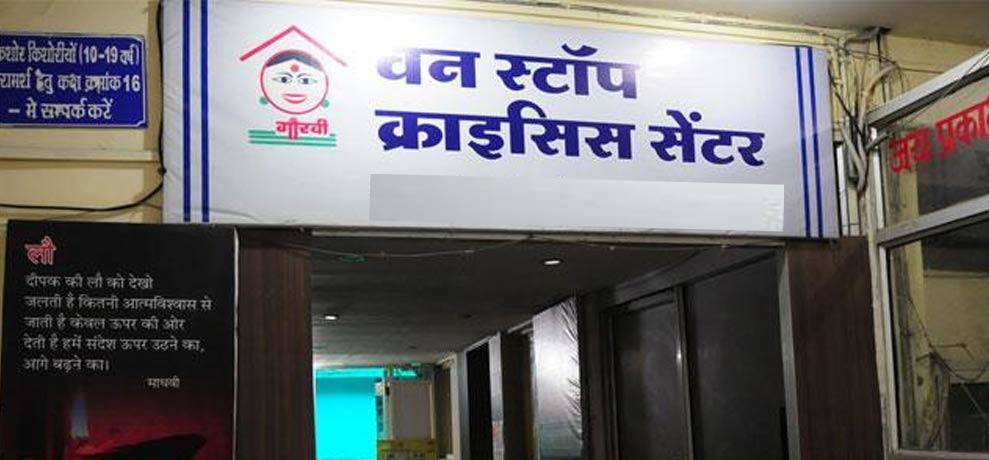It has been 5 years since the tragic events of 16th December 2012, when Jyoti Singh Pandey was brutally gang-raped and murdered by six men. The deeply disturbing details of the night instigated nationwide protests with people coming out on streets questioning the normalized rape culture in our country. During the protests, the police were accused of being violent towards women to curb the protests, resulting in only increased agitation among the protesters who pointed out government’s visible inadequacy to deal with violence against women.
In 2013, The Union Government announced the Nirbhaya Fund in response to the incident. The purpose of the fund was to address violence against women and establish One Stop Centres for them in every district. The One Stop Centre Scheme was introduced to specifically address gender based violence and the provisions included providing temporary shelter to women, medical examination in case of a physical assault, legal counselling in case the woman wants to take a legal recourse against the perpetrator and psychological counselling to address the trauma the woman might be going through.
The purpose of the Nirbhaya fund was to address violence against women and establish One Stop Centres in every district.
I visited four government hospitals in the Delhi NCR Region to investigate the status of the One Stop Centres the government promised, and this was what I found.
AIIMS, Delhi

AIIMS Hospital. Credit: Indian Express
I wouldn’t say it was a Herculean task for me to navigate through the All India Institute Of Medical Sciences (AIIMS) to find the One Stop Rape Crisis Centre, which turned out to be situated in the emergency ward with no sign to show for it – I am saying it was not easy. Neither would I say that the people were not helpful, but I definitely wouldn’t say that the environment was conducive for anyone who had gone through something traumatic.
After asking directions from the mostly male staff at the hospital (most of them did not know what One Stop Centre was), I landed at the doors of the emergency ward. There I was told by the guard that the casualty ward had been turned into a One Stop Centre in whispered tones. When I entered I asked the two male receptionists about the One Stop Centre, they seemed thrown off by the nomenclature. There was not a single One Stop Centre sign at AIIMS, and they looked confused and told me “Yahan pe nahi hai” (There is no centre here). Then I asked them point blank – “Do you perform medical examination on Rape victims here?” They said yes.
One Stop Centre is a generous word for what I found at AIIMS – after all they only provided one facility out of several listed in the document, and the process to access that one facility was a harrowing one. The two men at the emergency ward at the reception told me that if one wants a medical examination they would have to go to the police first, and then come here with the police to get a medical examination from a female gynaecologist. “And what then?” I asked. Again, they seemed thrown off by the question and found it absurd. I knew asking if AIIMS provided legal and psychological counselling to rape survivors was pointless. I asked them if they assisted the rape survivors with anything else, something other than the medical examination. The answer was no. This is the top government hospital in our country.
The process of getting redressal should be made easier for trauma victims.
The One Stop Centre scheme entails giving legal and psychological counselling to the rape survivor. Ideally, they shouldn’t have to be the one to file a case or take the effort to go to the police station. They should be given legal assistance at the Centre itself. The process of getting redressal should be made easier for trauma victims. If the process is hard, what does it say collectively about the society we are living in?
Safdarjung Hospital, Delhi
After my initial disappointment with AIIMS I went to Safdarjung Hospital. I was relieved to find the One Stop Centre sign just as I entered. Only women were allowed to enter the Centre.

Safdarjung Hospital. Credit: Indian Express
I was directed to meet four women sitting in a ward right at the entrance. However, as nice as the women were, and I do appreciate them having a signboard outside – the Centre was still largely inadequate in its facilities. The process for getting the examination done was similar – the survivor had to register with the police and the police would escort them to the Centre. And then the medical examination by the female gynaecologist would start.
“What about legal and psychological counselling?”
I was asked what I meant by psychological and legal counselling. Not a good sign.
“I mean, are rape survivors educated here about the legal recourse they can take? Can they access therapy here by a certified professional?”
The answer was no.
Civil Hospital, Gurgoan
Civil Hospital in Gurgaon was the closest thing I found to an adequate One Stop Centre. But again the process to find it was a harrowing one. I was first sent to the first floor, from where I was told the One Stop Centre (which had been temporarily opened at the first floor) had shifted to ground floor. On the ground floor, most people were insistent it was on the first floor. The administration seemed convinced it was on the first floor as well and directed me towards the gynaecologist’s office for confirmation.
Finally, a woman from the gynaecologists’ office gave me directions to where the One Stop Centre could possibly be situated. I managed to find it – it was at the far end on the ground floor of the hospital where most of the construction work was going on. There was only a single room assigned to it.

Civil Hospital in Gurgaon. Credit: Hindustan Times
The One Stop Centre at the Civil Hospital did provide free psychological counselling. The only cost you would have to incur is the 5-rupee OPD Card. In case of sexual violence, you would have to register the sexual violence with the Women’s Cell. The Women’s Cell would also provide legal counselling to the victim in case they sought legal recourse. However, there was no legal counselling at the centre itself.
Even though the Civil Hospital was slightly better than AIIMS and Safdarjung Hospital, they could still have tried to make the process of finding the Centre easier. And also, while at it, could they accommodate all the provisions promised by the government?
Government Hospital, Gurgoan
I also visited a local Government Hospital in Sector-6 Gurgaon. Not only had they never heard of One Stop Centre, the hospital did not have a single gynaecologist.
The problem is not the inadequacy of funds – a corpus of ₹1000 crore for the safety of women and girls was announced in the Union Budget of 2013, with an additional ₹1000 crore added to it each year since its inception. It is the lackadaisical attitude when it came to implementation of this scheme. Last year, FII published a detailed report following up what is being done with the fund and how exactly it was being utilized (spoiler alert – it wasn’t). The government’s procrastination in introducing these Centres, to say the least, is outrageous. The existing centres are largely inadequate in addressing the needs of survivors.
Also Read: It’s Been 4 Years – What Has The Nirbhaya Fund Done So Far?
The problem is not the public awareness surrounding the issue of violence against women. In fact, our society is fairly active in engaging in the discourse around this – not that I am particularly proud of some arguments around the topic, especially morally-tinted ones that lean towards victim-blaming and curtailing women’s access to public spaces. However, as a society we have been actively acknowledging the problem, and trying to navigate our way around this. There is no inadequacy when it comes to public outrage and their willingness to address systemic discrimination against women, and yet availing institutional redressal is difficult.
While researching the probable causes behind the lackadaisical implementation of this scheme, I came across several news pieces detailing the incompetence of the Centres, and states’ inability to cooperate with the Centre regarding the utilization of the fund. The Government’s incompetence is so normalized that our reaction to it is usually feigned shock, if we even take the effort to indulge in that reaction.
The problem is not the public awareness surrounding the issue of violence against women, it is the government’s apathy.
I went to the Delhi Commission for Women to discuss these inadequacies. The visit was largely unproductive and I was asked to visit National Commission for Women to express my concerns.
As a society, there are only specific kinds of violence we recognize, which is hugely problematic in itself. But even the kinds of violence that are given their due acknowledgment do not get the luxury of an adequate means of redressal. It is disappointing and upsetting, to say the least.
We must collectively stop settling for Government’s abysmal deliverance in what they promise and question it, period.
Featured Image Credit: Hindustan Times
About the author(s)
Holden Caulfield thinks you are a phony.





Can you put down a list of Government sanctioned OSCs in Delhi NCR?
i knw brother your concern is right and is appreciated that you bring out the que . And i hope this will work..after all its has been 8 years ntng has been changed.